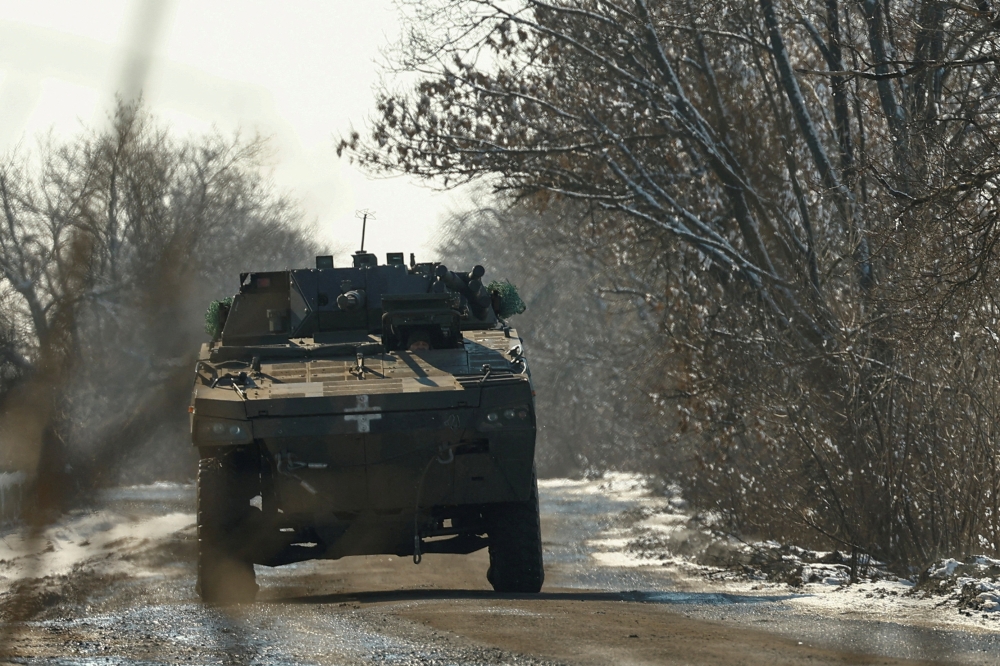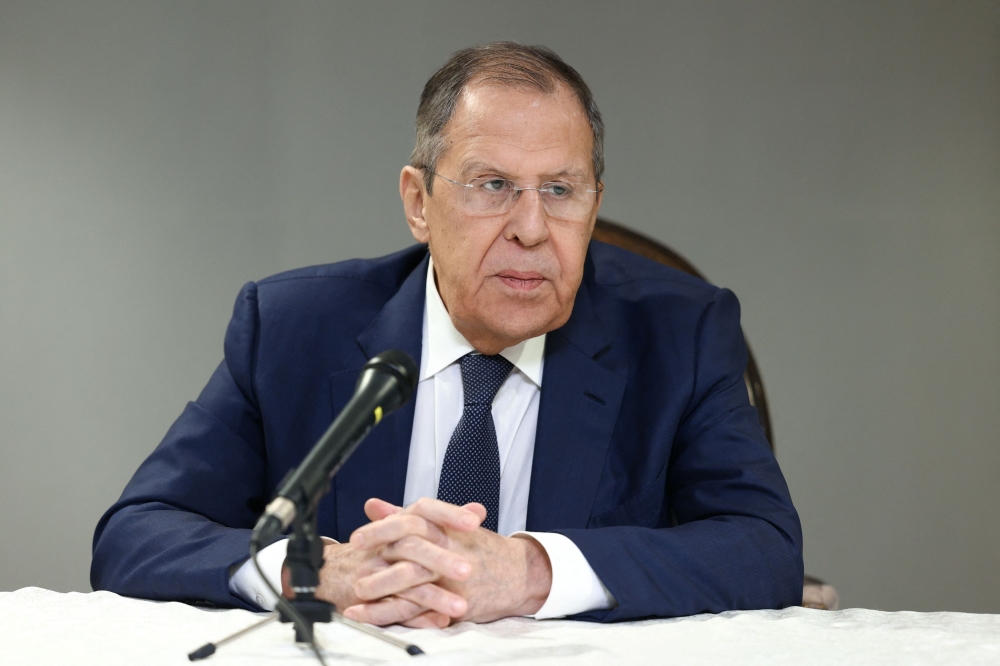
Without US military backing, will European peacekeepers in Ukraine deter Russia or risk escalation?

A person waves a Nato flag during a protest outside the White House on President's Day in Washington February 17, 2025. — Reuters pic
Wednesday, 19 Feb 2025 9:00 PM MYT
BERLIN, Feb 19 — Faced with US demands to provide the military muscle to enforce a future Ukraine peace deal, Europe finds itself in a bind.
Experts say that sending European peacekeepers to Ukraine might stretch and weaken Nato’s own defences, and that the mission would still need US support to succeed.
While US boots on the ground may not be necessary, deterrence in the form of US medium-range missiles and ultimately nuclear weapons will remain crucial.
“I’m not sure that any security guarantee will be 100 per cent credible against an aggressive and nationalistic Putin unless it involves the Americans in some way,” said Mark Lyall Grant, Britain’s national security adviser during part of Trump’s first term.
European officials also say only a US guarantee would protect European peacekeepers and deter Russia from any future attack on Ukraine.
Last week, US President Donald Trump shocked Europeans by arranging bilateral peace talks with Russia, which were launched on Tuesday in Riyadh, while Defense Secretary Pete Hegseth told allies that “any security guarantee must be backed by capable European and non-European troops”.
He made clear US troops would not be sent to Ukraine.
At an emergency meeting in Paris on Monday, European leaders remained split on the idea of deploying peacekeepers to Ukraine, a plan some European nations had started discussing last year at France’s initiative.
Such a force would raise the risk of a direct confrontation with Russia and stretch European militaries, whose arms stocks have been depleted by donations to Ukraine and who are used to relying heavily on US support for major missions.
On Monday, British Prime Minister Keir Starmer said he was willing to send troops to Ukraine but there would need to be a US “backstop” as well.

A Ukrainian serviceman drives a Rosomak armoured personnel carrier along a road, amid Russia's attack on Ukraine, in Dnipropetrovsk region, Ukraine February 18, 2025. — Reuters pic
Could European peacekeeping deployment weaken Nato?
Experts warn that deploying a large European force to Ukraine might weaken Nato’s defences against a wider and growing threat from Russia as a halt to the conflict would enable its war economy to replenish military stockpiles rapidly.
Some also doubt whether European countries, who have been struggling to boost readiness after decades of relative peace since the Cold War ended, could quickly raise enough combat-ready troops, especially if they were asked to secure more than 2,000 km of contact line with Russia and Moscow’s ally Belarus.
Claudia Major, an analyst for the German SWP think tank, said assembling such a peace force was barely achievable for the Europeans on their own.
Estimates of its required strength range from 40,000 to 150,000, in addition to Ukrainian forces, she told the German broadcaster ARD on Monday.
For comparison, Nato’s peacekeeping force in Kosovo started out with 48,000 troops in 1999, securing a territory of 11,000 sq km (4,000 sq miles), according to a study co-authored by Major, whereas Ukraine is almost 55 times that size.
“The Europeans don’t have this mass at the moment unless they weaken their own defence or the planned defence of the Baltics, for example, which is obviously controversial,” Major said.
“At the same time, they lack key capabilities in the areas of reconnaissance, air defence or targeting, which only the US has to a sufficient extent.”

Russian Foreign Minister Sergei Lavrov attends a press conference following the talks with US Secretary of State Marco Rubio, US National Security Advisor Mike Waltz, and US Middle East envoy Steve Witkoff, in Riyadh, Saudi Arabia February 18, 2025. — Picture by Russian Foreign Ministry
Russia objects to any prospective Nato peacekeepers
Michael Kofman, a senior fellow at Carnegie Endowment, said a deployment of three brigades, units of some 3,000 to 5,000 troops, at any one time might be sufficient to secure the four to five sectors of the front where fighting was concentrated.
The usual rotations for recreation and training would triple the number required to perhaps 50,000 “without cancelling all existing regional defence plan requirements”, he posted on X.
“But the force needs to have battalions near the front, not milling about in Western Ukraine doing training,” he warned, adding that such units would have to be mobile.
“The bigger question is, what should this force do, and how does it deter?”
He also asked what military actions might be triggered by any Russian infringement of the ceasefire: “If it is a tripwire, what does it attach to?”
Some experts advocate leaving it to Ukrainian forces to secure the contact line while keeping a means of deterrence outside.
Hegseth did not explicitly state that peacekeeping troops must be stationed inside Ukraine but made it clear they would not be covered by Nato’s mutual defence clause, Article 5.
However, Russian Foreign Minister Sergei Lavrov told reporters in Riyadh yesterday that the presence of any troops from Nato member countries inside Ukraine was unacceptable to Russia, whatever flag they flew.
But providing a deterrent from outside Ukraine might pose a different dilemma for the Europeans, who lack the medium-range weapons that could strike Russian targets from a distance in retaliation for ceasefire violations.
Nor do they have the giant US nuclear arsenal that provides the ultimate deterrent against nuclear-armed Russia. — Reuters
Ain't an European 'peace-keeping' forces coming out of NATO member nations.
ReplyDeleteIf that's the case, then how could neutrality be maintained, considering objecting to NATO troops present in Ukraine IS the main cause of the current special military operation initiated by Russia?